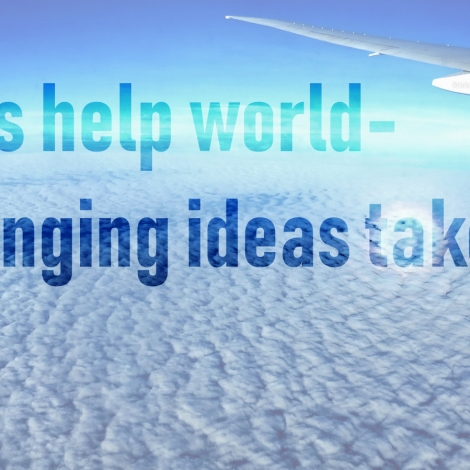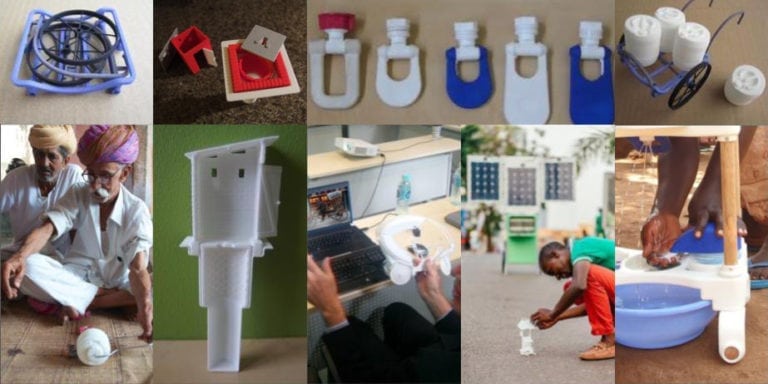Inventors are solving the myriad problems that arise from global poverty, but there is not enough focus on the big issues. Global development experts observed a dichotomy between big need versus small effort at this year’s SOCAP conference in San Francisco. The suggestion is that there are not enough collaborative resources pulled into the big things. Instead, you find a lot of little solutions at work. They’re noble causes, but many are restricted in their ability to scale. Individual entrepreneurs respond to immediate problems they see, and ones they feel they can reasonably tackle. This is important work, but one entrepreneur can’t go it alone. Product designers and small start-up founders working in global development need support.
A small number of big things
The small scope of many of the products available came to light three years ago when the team at the Lawrence Berkeley National Lab’s Institute for Globally Transformative Technologies began work on its “50 Breakthroughs” report. The report, published last year, is a 648-page tome of sustainable global development ideas that includes conversation starters on everything from food security to digital inclusion. But it didn’t start with such a sweeping goal.
“The first thing we thought about when our institute was created [in 2012] was what to work on. It was a three month, back-of-the-envelope brainstorming exercise,” Shashi Buluswar, the institute’s co-founder, told a SOCAP audience.
“As we were talking to people, we found that there was a disappointingly small number of really big things happening. The needle is not moving on those really big things. We realized this could be an important body of work,” he said.
Short supply of funding for global development start-ups
Implementing big change costs big bucks. And while promising developments in energy or healthcare may be backed by large commercial institutions, governments or research institutions, start-up funding is often in short supply for engineers and inventors in the early stages of experimentation.
A new report by the Lemelson Foundation reveals that young companies are most vulnerable at the point when they have a demonstrated idea but have run out of seed funding sources, like university or government grants or personal investments. The most difficult funds for them to raise are amounts of $50,000-$500,000 that help them build a proof of concept, drive additional R&D or cover day-to-day expenses such as rent and salaries.
This financing gap resonated with Piyush Mathur, CFO of Simpa Networks – an India-based social enterprise that provides pay-as-you-go solar energy for poor households. “We faced all of the usual challenges that you can think of, but we realized early on that we can’t bootstrap the business,” Mathur said during a panel discussion on “Catalyzing Capital for Invention.”
A chain reaction of investment
Simpa Networks has been lucky in its ability to identify sources of funding to carry it through its early journey, starting with support from social enterprise incubators and mentors Village Capital and Villgro, which focus on start-ups and inventors working in global development. These initial investments and mentors started a chain reaction of increasingly large and prominent sources of capital by allowing Simpa to effectively prove its technology and the scalability of its business model.
Fundraising is a costly exercise for young companies, however; the exercise often takes time away time from building the products and technologies that anchor the business and proving their value. The Lemelson Foundation’s report, which focuses specifically on invention-driven entrepreneurship in India, highlights a number of recommendations that would ease this pressure on business owners. These include suggestions for how foundations can creatively deploy grants to spur future investments or provide low-cost loans to cover businesses’ operational expenses.
Let’s help world-changing ideas take off
Yet, funding is only one small piece of the puzzle. The Simpa team, for example, recognized early on that it would need outside sources of funding to succeed, but also outside skills and mentorship. Business and resource support is a critical need for engineers and inventors building new products and technologies, particularly in the developing world.
On this point, Philip Varnum, chief financial and administrative officer of Lemelson told the “Catalyzing Capital” audience at SOCAP that to ensure that important, world-changing ideas take off, engineers and inventors have to be supported by a robust business ecosystem. “It’s not just about solving for financing. You have to focus on solving all of these issues together,” he said.
So let’s do this. We’d like to see some of those world-changing ideas at work.
About the Author
Jessica Pothering is the editor of DEMAND, the ASME Global Development Review.

